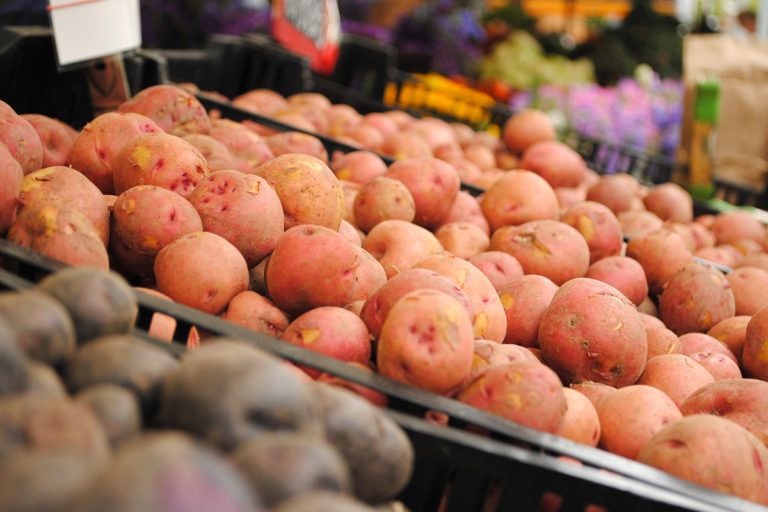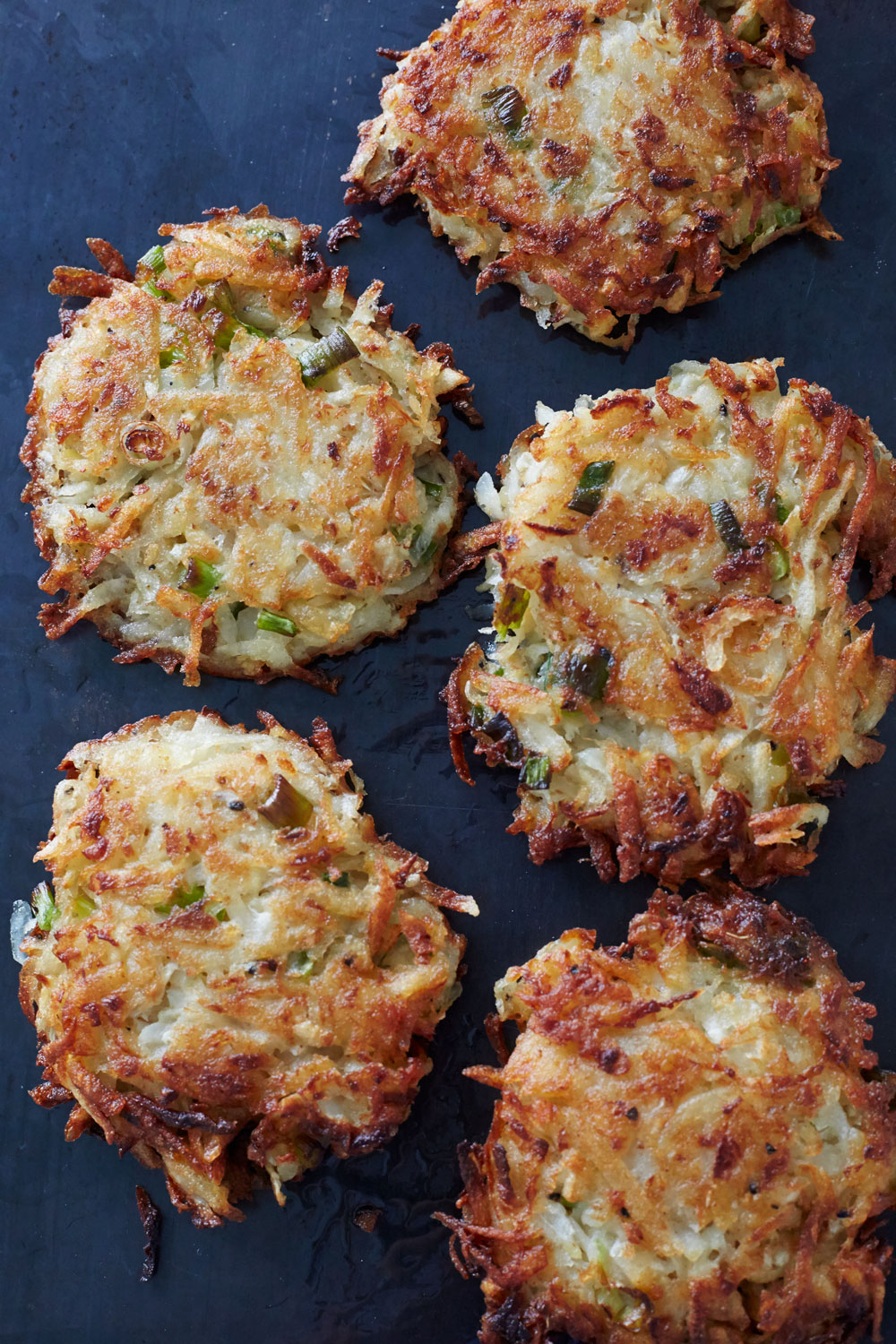
Root Vegetable Latkes with Old Country Sour Cream
Source: Liz Alpern & Jeffrey Yoskowitz, The Gefilteria

Recipe Type: Appetizers and Sides | Seasons: Winter
This recipe was demonstrated for CUESA’s Market to Table program on December 3, 2016.
Makes 18-22 latkes
INGREDIENTS
4 russet potatoes (about 2 pounds), peeled
1 medium parsnip, peeled
1 medium turnip, peeled
1 small onion
4 scallions, finely chopped
3 large eggs, lightly beaten
1 tablespoon kosher salt
¼ teaspoon freshly ground black pepper
3 tablespoons all-purpose flour
⅓cup bread crumbs or matzo meal
Schmaltz, or peanut, canola, or grapeseed oil, for frying
Apple-pear sauce, or applesauce, for serving (optional)
Sour cream, store-bought or homemade, for serving (optional)
PREPARATION
Shred the potatoes, parsnip, turnip, and onion on the large holes of a box grater or in a food processor using the shredder plate. Place the grated vegetables in a large bowl and add cold water to cover. Set aside for about 5 minutes. Drain the vegetables in a colander and squeeze out as much liquid as possible. Then transfer the shredded vegetables into a bowl lined with cheesecloth or a towel, wrap the cloth around the vegetable bundle, and squeeze tightly until as much liquid as possible has been squeezed out. White potato starch will collect at the bottom of the bowl. Carefully drain off the water, leaving the potato starch. Set aside.
Place the drained, shredded vegetables into a large bowl. Add the scallions, eggs, salt, pepper, flour, bread crumbs or matzo meal, and the reserved potato starch. Mix well, preferably with your hands.
In a 9 inch nonstick or cast iron skillet, heat a layer of schmaltz or oil, about ⅛inch deep, over medium heat. Form the latke batter into thin patties, using about 2 tablespoons for each. As you form the patties, squeeze out any remaining liquid and discard. Carefully slip the patties, about 4 at a time, into the pan, and fry for 2-3 minutes on each side, or until golden brown and crisp. Take care to flip them only once to avoid excess oil absorption. If the pan begins to smoke at all, add more schmaltz or oil and let it heat up again before frying another batch.
Remove the latkes from the pan and place on a baking sheet lined with paper towels. Latkes are best and crispiest when served right away. If serving later, transfer to a separate casserole dish or baking sheet and place in a 200°F oven to keep warm until serving. Serve hot, topped with apple-pear or applesauce and/or sour cream.
OLD COUNTRY SOUR CREAM
In a world without refrigeration, soured cream was practical and delicious. The process wasn’t much of a to-do, either: you just let unpasteurized cream sit and the result was an all-purpose condiment with a velvety texture and a strong sour flavor. Note that because homemade sour cream lacks chemical coagulants, it will be runnier than store-bought sour cream.
Makes 1½ cups
INGREDIENTS
1 cup heavy cream
¼ cup store-bought cultured buttermilk
PREPARATION
Pour the heavy cream and buttermilk into a clean pint or quart size glass jar with a lid. Seal tightly and shake vigorously for about 1 minute. Let the jar sit on the countertop at room temperature, out of direct sunlight, for 24 to 48 hours. The longer it sits, the sourer it will become. It’s hard to judge from the looks of your sour cream when it’s ready, so taste it to see if you like the level of sourness within the 24-48 hour window. The warmer it is in the room, the faster it will sour. You may notice liquid separation occurring, which is nothing to be concerned about. However, if the mixture becomes yellow or chunky (which can happen if the room temperature is too hot), toss it out and try again.
You can store the sour cream, refrigerated, for up to a week. Shake before each use to reincorporate any liquid that has separated, and use a clean spoon every time you dip into the jar.
Reprinted with permission from The Gefilte Manifesto by Jeffrey Yoskowitz and Liz Alpern, copyright © 2016. Published by Flatiron Books. Photography by Lauren Volo.


